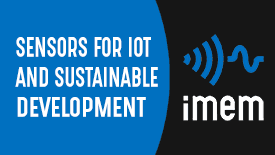Wearable technologies for wellness and sport
IMEM institute has developed an innovative approach to wearable sensors, based on the integration of the active part of the sensors in widely used materials, such as textile fabrics or porous polymers. Thanks to the use of material functionalization technologies based on conductive polymers, biosensors with OECT (Organic Electrochemical Transistor) geometry have been created for the monitoring of biological fluids, in real time.
In particular, sweat analysis was performed to monitor the physiological state of the person and the sportsman. Thanks to further functionalizations, with enzymes or with ion-selective membranes, wearable textile biosensors have been used to selectively analyse neurotransmitters such as tyrosine, and specific salts, such as potassium, calcium, and sodium.
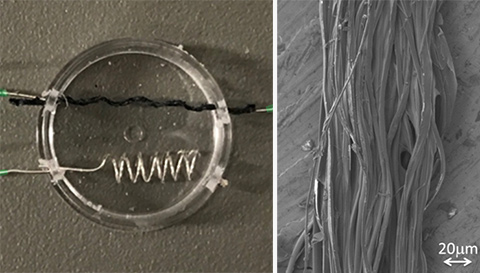
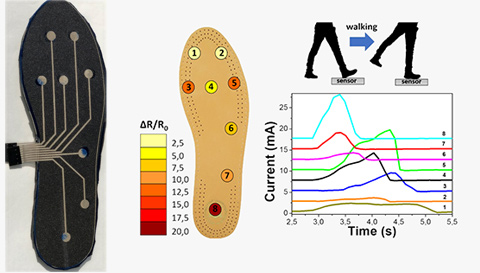
Furthermore, thanks to the functionalization of porous polymers with conductive polymers, soft pressure sensors have been created. These all-polymeric structures can be used in specific wearable devices, such as the insole of a shoe. With these technologies, prototypes of active insoles have been realized, with the aim of monitoring the pressure of the foot in different points in real time, determining the person's posture and gait defects.
Biomarkers, nanomedicine and drug delivery
The experimental activity aimed at developing biosensors of interest in the medical field consists in the fabrication and characterization of devices belonging to the family of Organic Electrochemical Transistors (OECTs) and making use of organic conductors deposited on flexible substrates.
OECTs show a versatile character in terms of allowed applications that is mainly due to their ability in promoting an efficient ion-to-electron transduction. For this reason, OECTs represent the ideal candidate for the interfacing with biosystems, whose function is ruled by ionic signals, and are proven to be an essential tool for the implementation of biosensing devices and platforms.
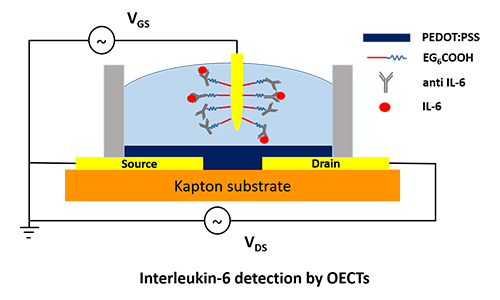
Device architectures designed at the IMEM institute are aimed at implementing solutions capable of covering a range of biosensing applications based on the detection of biosystems upon using biomarkers and probes/primers of interest in the field of nanomedicine. The flexible and biocompatible character of materials used for the device manufacturing allow obtaining conformable and implantable tools. Such devices show peculiar properties that, if required, make them integrable with systems conceived for customized care, such as devices for the controlled and smart release of drugs (drug delivery) to a specific target site, in view of the design of Point of Care testing devices.
Magneto-plasmonic (MP) biosensors
Magnetoplasmonic sensing is a novel concept of active and multimodal optical detection based on materials that exhibit simultaneously plasmon driven optical and magnetic properties.
Typically, the transducer is a hybrid nanostructure composed by a magnetic metal or oxide moiety and a plasmonic moiety like Au and Ag. The plasmon induced optical response of these structures is modulated by the magneto-optical effect of the magnetic moiety, and vice versa.
Differently from the classical absorption or transmission optical detection modes employed in plasmonic sensor devices, the MPs sensing concept uses the magnetic field induced modulation of the optical properties and it detects the magneto-optical signal by Kerr or the Dichroism and it detects with larger sensitivity than the SPR detection.
The IMEM group works in three main lines:
- Development of MPs ATR transductors for sensing. The IMEM can growth epitaxial MP multilayers by sputtering with reduced roughness and soft magnetic properties. The employment of these structures for detection of VOCs and biomedical markers using Magneto-optical Kerr effect was demonstrated.
- Development and study of the magnetoplasmonics coupling in MPs nanostructures with localized plasmons. Different structures combining Au and Fe oxide were obtained and the relationship between the magnetic and plasmonic properties is investigated.
- Investigation of the Magneto-optical detection as optical sensing probe.
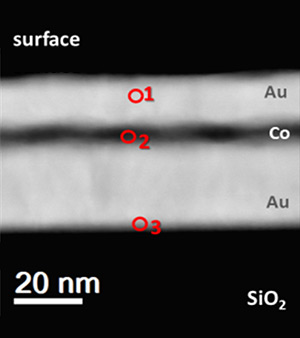
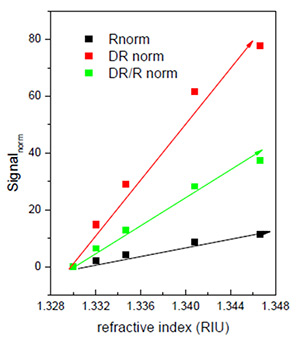
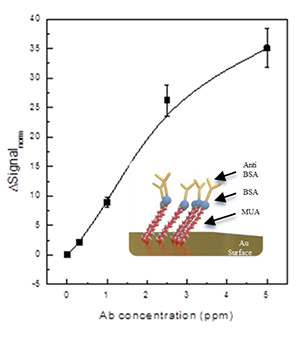
This activity is correlated to the research activity of the Magfun team on “Magnetic nanoparticles for biomedical applications and Magnetoplasmonic nanoparticles”.








